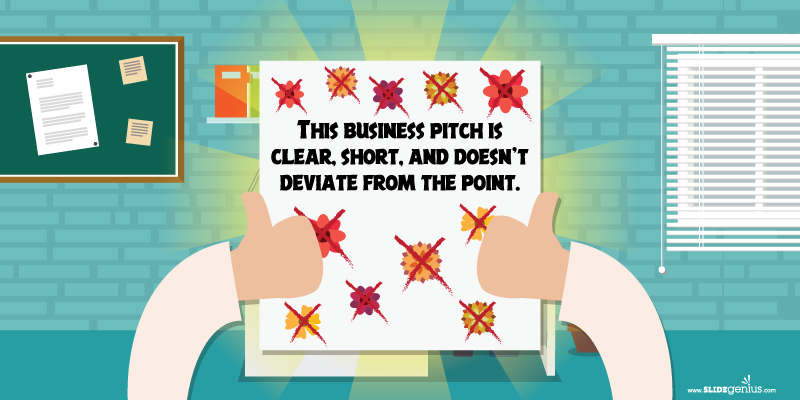
That brilliant idea you have which can affect positive change in the workplace is largely useless until you communicate it to someone who can bring it to life. However, pitching an idea to a colleague is easier said than done. It’s not easy to explain a concept to someone who has a different background. You’ll need to bridge a knowledge chasm that separates you from your intended recipient. You also have to watch your manner of speaking since you can’t afford to insult your recipient with the faintest hint of condescension. In the same way, you can’t be too naïve to assume that the other person is on the same page as you.
Presenting an idea to a coworker, whether it be a superior or an equal, is always a risk. There’s a possibility of your proposal getting turned down, or worse, ignored. This is why you need to be fully prepared before making your business pitch. Make sure you possess not only flair and poise but also valuable content—a worthwhile idea that can sell itself. Keep in mind what Dorothy Tannahill Moran from Next Chapter New Life, said: “There is a difference between a great idea and an idea that will truly advance the cause of business.”
Know the Recipient’s Hot Buttons
People have different ways of processing information. Some learn best with visuals while others prefer one-on-one talks. Others are still more comfortable with written exchanges. Conduct a research that will allow you to learn what’s best for your audience. You should possess a heightened sense of contextual awareness if you are to thoroughly understand your recipients. Be astute in sensing their moods, values, and attitudes. Develop a contingency plan that will allow you to align your objectives with theirs. After all, the pitch is not for you but for the company as a whole.
Make Your Pitch Direct and Concise
Trim the fat from your pitch and go straight to the point. Don’t bore your recipient with unnecessary details. Instead, stick to what your idea will do for them and the organization. “Managers want solutions to the problems that are keeping them awake at night,” said Leigh Steere from Managing People Better. He couldn’t have said a truer statement. When delivering your pitch, make sure to keep the buzz words out. Cut to the chase before your recipient tunes out from your smooth talking. Remember, substance should always come before form.
Gain the Recipient’s Trust and Confidence
People don’t usually open up to those they don’t trust, so you should try to gain your audience’s confidence before asking them to accept your idea. You can gain your recipient’s trust by displaying a level of authenticity and transparency. Be relatable when delivering your pitch by telling stories, using examples, and applying humor in appropriate situations. Speak to your recipient’s emotions, and let your message take deep root with them. Engage in a meaningful conversation by encouraging a dialogue. Surely, you can learn from them as much as they can learn from you.
Assert Yourself and Speak with Tenacity
When speaking with superiors and senior colleagues, you should talk and act like they do. Treating them like peers will encourage them to do the same to you. Respect their authority and position, but don’t be deferential and submissive. Show them that you’re thinking in the same level as they are. This will give them the impression that you can stand by your idea and defend it when the need arises.
Prepare and Practice Diligently
No matter how great your idea is, if you don’t practice how to deliver it, your pitch will likely prove unsuccessful. To maximize your chances, have someone to practice your pitch on. This person should have a total lack of knowledge regarding your idea. He or she should also be willing to provide you with honest feedback. You can practice your pitch on more than one person to take more perspectives. Presenting your pitch to a test audience will help you pinpoint the aspects of your presentation that need improvement. If the test audience understands and approves of your idea and the manner by which you present it, you’ll know that you’re starting off on the right foot.
Find the Right Time to Make Your Pitch
Let’s say you’re ready with your pitch. You have a cutting-edge idea and an innovative way of presenting it. The only concern that remains now is, when is the right time to deliver your pitch? There isn’t one answer to this question since every circumstance is different. You’re on your own to assess whether your recipient is ready to participate in your presentation. Perhaps Tannahill Moran’s words can help you. She said, “If the house is on fire, a new idea tossed into the mix may not go over well unless the idea helps the immediate crisis. You want to present an idea when the ability to focus and plan exists.”
The Aftermath: How to Brace Yourself for Responses
Prepare yourself for the many kinds of responses you may receive. There’s a high possibility that your recipient will pepper you with questions to test your thinking. Think two steps ahead and formulate a response to every possible concern. When you’re faced with antagonism, keep an open mind. A dissenting opinion can help you improve on your idea. If, however, your pitch is ignored, follow up until you get an answer—just do so in a non-imposing way. After all, your audience don’t owe you their participation. It’s up to you to get them engaged.
You might only have one shot at presenting your newfangled idea. Make sure you put your best foot forward and deliver a pitch that is worthy of your recipient’s time.
Resources:
Baxter, Susan. “Learning Styles: Three Ways to Process Information.” Top Ten Reviews. n.d. www.toptenreviews.com/software/articles/learning-styles-three-ways-to-process-information
Boitnott, John. “How to Pitch Your Brilliant Idea Without Making the People You Need Feel Stupid.” Entrepreneur. October 10, 2014. www.entrepreneur.com/article/238176
Bonilla, Christina. “Want to Be Taken Seriously? Communicate Like a Boss.” Smart Like How. October 13, 2015. www.smartlikehow.com/blog-native/2015/10/12/l0d6fzogavxj6p72p0yucsuzvdpd9w
Cohan, Peter. “5 Ways to Communicate More Clearly.” Inc. December 4, 2012. www.inc.com/peter-cohan/five-ways-to-improve-your-communication-success.html
Edinger, Scott. “If You Want to Communicate Better, Read This.” Forbes. March 20, 2013. www.forbes.com/sites/scottedinger/2013/03/20/if-you-want-to-communicate-better-read-this/#59a3132b2281
Groth, Aimee & Lockhart, Jhaneel. “7 Smart Ways to Come Up with More Ideas at Work.” Business Insider. January 21, 2012. www.businessinsider.com/7-smart-ways-to-come-up-with-more-ideas-at-work-2012-1
Herrity, Joseph P. “Communicating Ideas Effectively.” Preferred Visions. n.d. preferredvisions.com/publications/thought-provokers/communicating-ideas-effectively
Madden, Kaitlin. “Have a Great Idea? How to Tell Your Boss.” CNN. March 16, 2011. edition.cnn.com/2011/LIVING/03/16/cb.tell.boss.good.idea
Myatt, Mike. “10 Communication Secrets of Great Leaders.” Forbes. April 4, 2012. www.forbes.com/sites/mikemyatt/2012/04/04/10-communication-secrets-of-great-leaders/#1b42d2021e06






